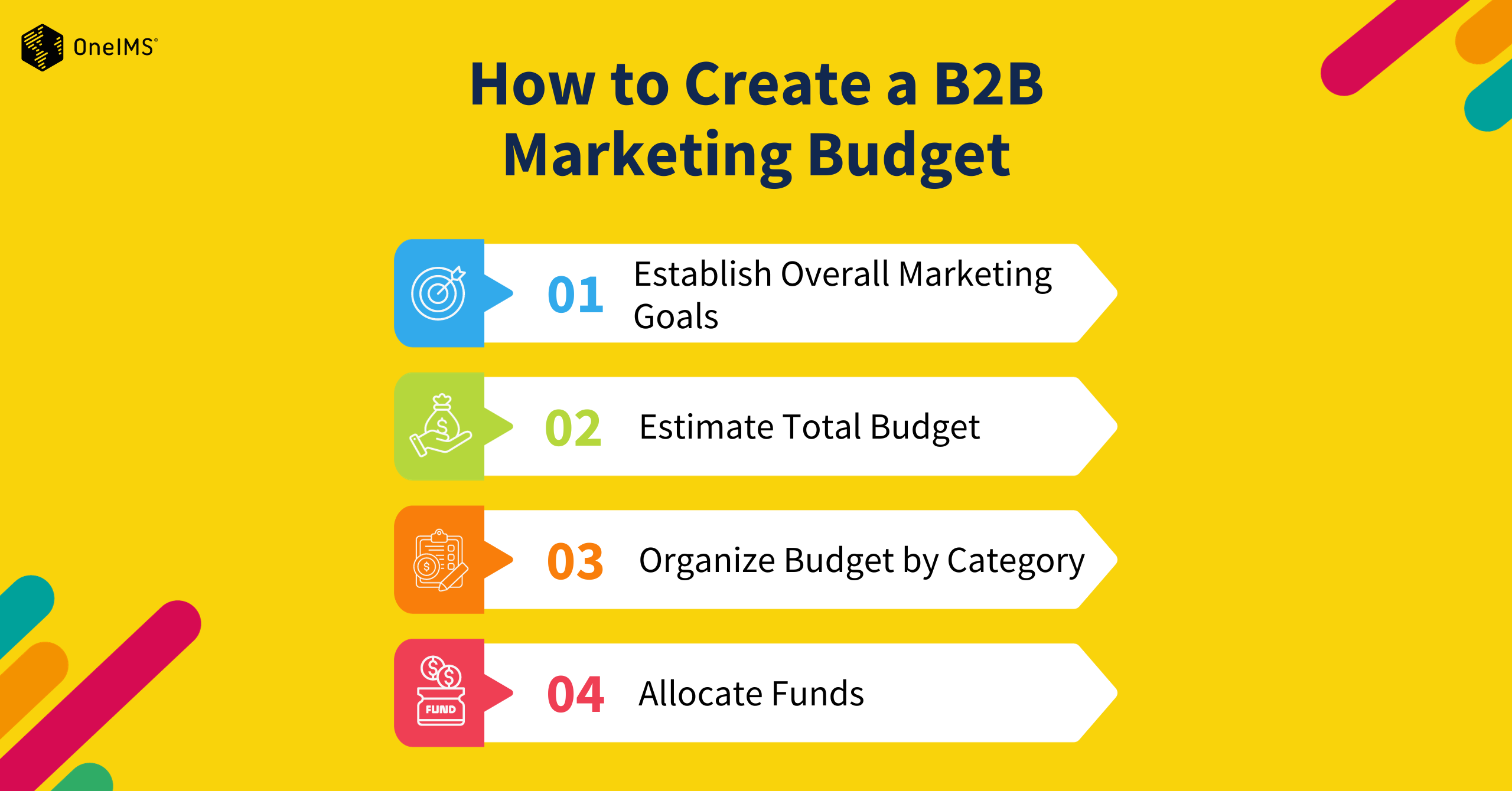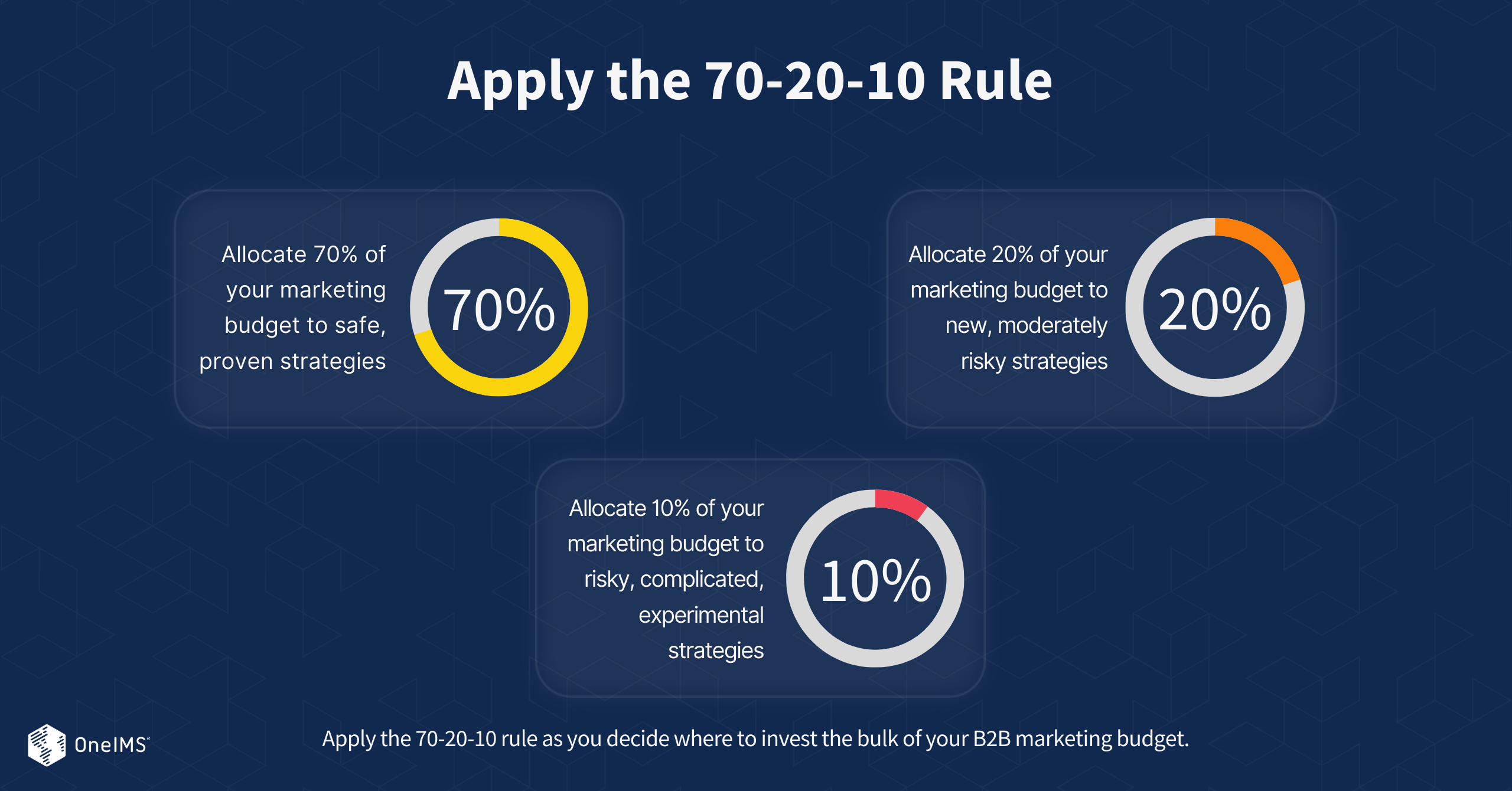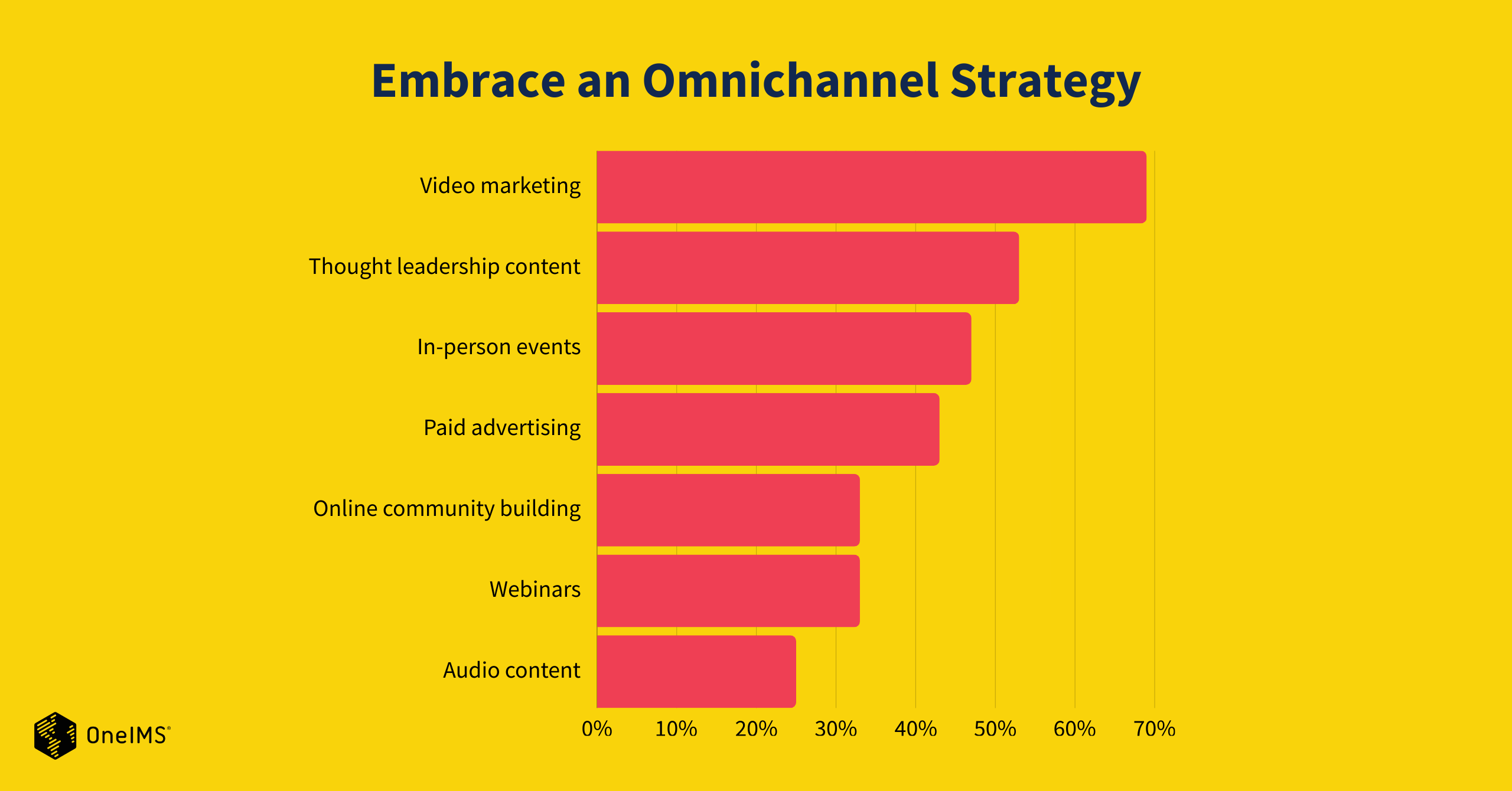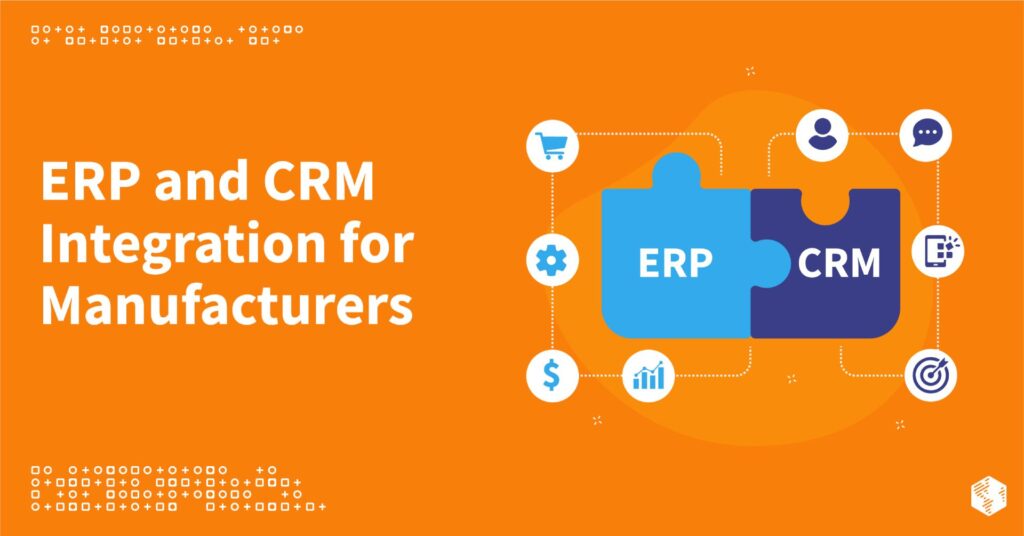2024 is just a few weeks away. If you’re a business-to-business (B2B) marketing leader, now is the time to set up your budget for the new year.
We all know how important marketing is to the success and growth of a B2B company—we couldn’t attract new business without it!—but when resources are stretched thin, it can be challenging to secure the funding necessary to execute your marketing strategy. However, by creating a detailed and data-driven budget, you can effectively allocate funds and align your marketing initiatives with the organization’s larger revenue and growth goals.
The Importance of Setting Up a B2B Marketing Budget
Investing in B2B marketing and crafting a budget to reflect your strategy is vital to the short-term and long-term success of your business. A clear marketing budget provides several benefits:
- Gives direction to marketing efforts
- Helps organizations effectively allocate limited resources
- Establishes a base for analyzing profitability of marketing initiatives
- Promotes collaboration across customer-facing teams and with revenue operations (RevOps) leadership
A well-crafted B2B marketing budget offers both a framework for investing and allocating funds and a guide for measuring success at year’s end.
How Is Marketing Spend Different in B2B?
Business-to-consumer (B2C) marketing and B2B have several key differences that impact marketing budgets.
B2B sales cycles and purchasing decisions typically take longer than the B2C buying process—and you must invest time and resources into marketing throughout this expanded buyer’s journey. Additionally, since B2B purchases are often much more complex than B2C products or services, B2B buyers expect more informative, educational, and personalized marketing efforts. There are also several key stakeholders at play that are involved in the decision-making process, and your organization must create customized campaigns and messaging that encourage all of them to sign on the dotted line.
This additional marketing spend must be reflected in B2B budgets. Since these purchases require more time, resources, and investment up front and over a longer period of time, it takes more time to see the (often more significant) results. It’s essential for B2B marketing leaders to understand this disparity and to organize budgets with these differences in mind.
How Much Should You Spend on B2B Marketing?
There is no magic number that determines how much your B2B company should spend on marketing.
Many B2B companies allocate a certain amount of expected revenue toward marketing efforts; anywhere from 7% to 15% of the organization’s total budget goes to marketing, with the average closer to 10% or 11%.
However, how much you allocate to marketing depends on several factors, including the size of your organization, the industry you operate in, the resources at your disposal, and how long you have been in business. For example, established B2B companies likely have already purchased marketing technologies, built a functional website, and created effective collateral, so their marketing budget might be on the lower end. Businesses or startups new to the B2B landscape will need to make investments to get off the ground, which requires additional funding and a higher budget.
How to Create a B2B Marketing Budget
Marketing budgets include everything your B2B marketing department needs to accomplish its goals. Expenses related to channels, platforms, technology, campaigns, advertising, conferences, and trade shows as well as lines for wages, new hires, freelancers, consultants, and administrative costs must be accounted for in the budget—with a little extra wiggle room to prepare for the unexpected.
Each B2B company must create a marketing budget that meets the unique needs of its specific situation. In other words, no two organizations will have the same budget. However, you can follow these general guidelines to create your B2B marketing budget.
Establish Overall Marketing Goals
Define SMART (specific, measurable, attainable, relevant, time-bound) goals for your overall marketing strategy and ensure they align with organizational revenue and growth goals. These marketing goals will outline priorities and determine what channels, strategies, and initiatives to focus on in the coming year’s budget.
Estimate Total Budget
How much money is allocated to B2B marketing across your company? This number may be outside of your control. Regardless, once you determine the funds available to marketing in 2024, you can start creating a comprehensive budget.
Look at past data (revenue and expenses), calculate the expected costs of each initiative in your B2B marketing strategy, and account for unexpected expenses that could pop up throughout the year. Divide the budget into quarters and months.
Organize Budget by Category
Break down the budget by category to make it easier to track spending and allocate resources. Common categories for B2B marketing budgets include content marketing, email marketing, marketing operations, social media marketing, search engine optimization (SEO), paid advertisements, events, and admin.
Allocate Funds
Now that you have a functioning budget divided into quarters and organized by category, it’s time to decide how to allocate funds across various platforms, channels, campaigns, teams, and tools. Efficiency is key here; carefully determining how much to spend for each part of your B2B marketing strategy is essential to reaching your marketing, revenue, and growth goals.
5 Best Practices to Allocate a Marketing Budget for B2B Companies
Once you’ve set your budget, it’s time to allocate funds based on your B2B marketing goals and strategy. This process requires making data-driven decisions about where (and how much of) your budget should be allocated.
Follow these best practices to figure out the best way to allocate funds for the coming year.
Examine Historic Data
Examining past marketing budgets (if they exist) as well as campaigns and initiatives can help you identify what areas of your marketing strategy you need to invest in to ensure continued success and growth. Some initiatives require more funds than others, and some of a more significant impact than others. Budget allocation should be based on potential and expected impact, so allocate funds as needed to cover your most profitable areas.
Apply the 70-20-10 Rule
Sticking to the same old platforms and channels can limit your growth, but experimenting can be risky. The 70-20-10 rule is a great way to have a healthy balance between time-tested and exploratory strategies.
Let’s break it down:
Embrace an Omnichannel Strategy
Today’s B2B buyers interact with your brand across multiple channels, platforms, and devices, so creating an integrated, omnichannel strategy is key to B2B marketing success.
As part of a 2023 study by the Content Marketing Institute, B2B marketers were asked if they planned to increase their investment in the following marketing areas in 2024:
- Video marketing (69%)
- Thought leadership content (53%)
- In-person events (47%)
- Paid advertising (43%)
- Online community building (33%)
- Webinars (33%)
- Audio content (25%)
- Digital events (21%)
- Hybrid events (11%)
The numbers don’t lie: B2B marketers across industries expect to increase spending for a variety of channels over the next year. To keep up with the competition, ensure you allocate funds in your B2B marketing budget to support an omnichannel strategy.
Determine How to Measure Campaign Success
Every marketing campaign and initiative needs defined key performance indicators (KPIs) and metrics that you can use to measure success and to determine whether your marketing budget was allocated effectively. Once you’ve established these KPIs and goalposts, you can periodically review your marketing spend and profits and then make adjustments to your budget as needed.
Balance Short-Term & Long-Term Marketing Initiatives
Short-term marketing initiatives, like lead generation campaigns, lead to immediate results. Long-term marketing initiatives, such as retention efforts and brand awareness campaigns, focus on sustained growth. Both short-term and long-term marketing initiatives are essential to the success and growth of a B2B organization.
Make sure your marketing budget reflects the right balance between these initiatives.
Calculating B2B Marketing ROI
The best way to justify a higher marketing budget is to calculate the return on investment (ROI) of your marketing initiatives and campaigns. ROI is a key metric when evaluating the effectiveness and measuring the profitability of B2B marketing budgets.
A simple B2B marketing ROI calculation is as follows:
(Revenue – Marketing Spend) / Marketing Spend x 100 = B2B Marketing ROI %
Depending on your marketing efforts, you may want to break down ROI by tactic or simply focus on the ROI of your B2B marketing budget as a whole. Regardless, showing positive returns on your marketing activities not only helps you determine how effectively you are allocating funds but also shows key stakeholders the kinds of returns you are generating.
Download a Free B2B Marketing Budget Template
Are you ready to start planning next year’s marketing budget? Download our free B2B marketing budget template so you’re ready to hit the ground running in 2024.



































